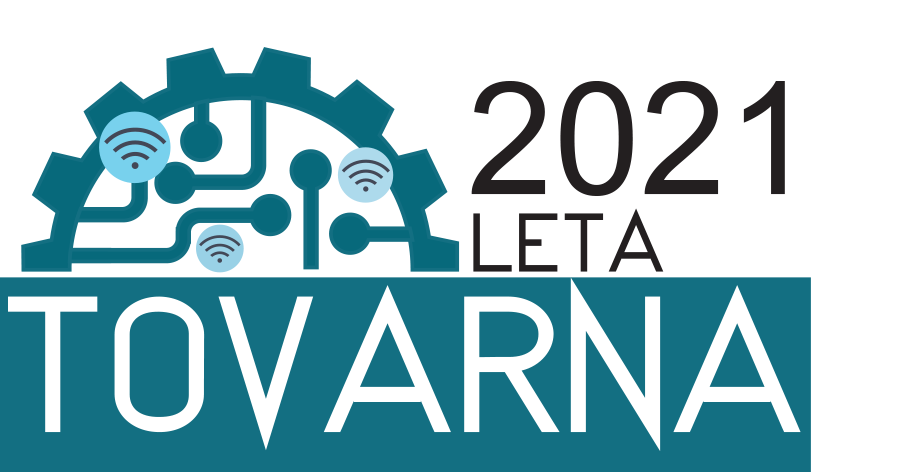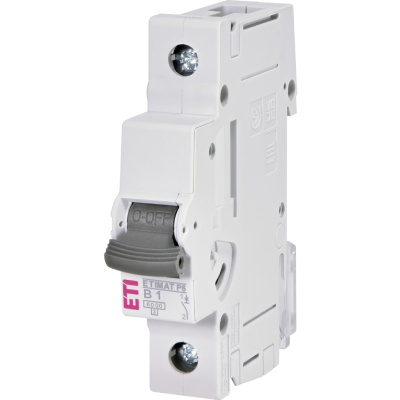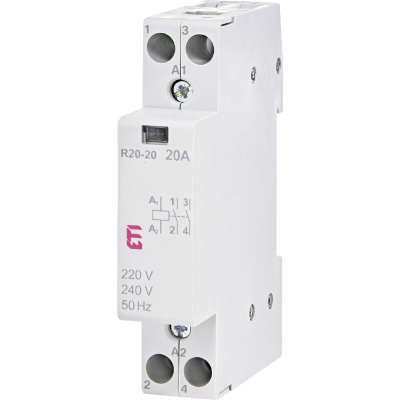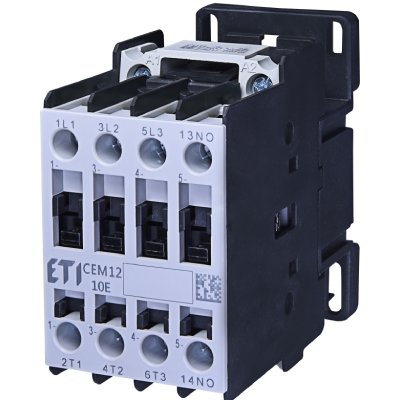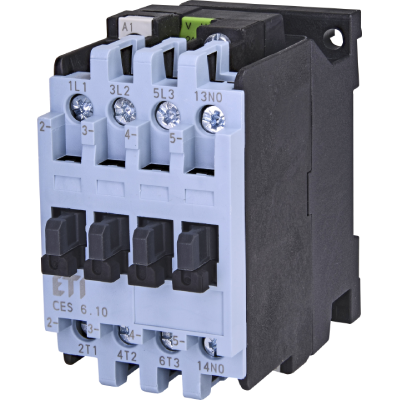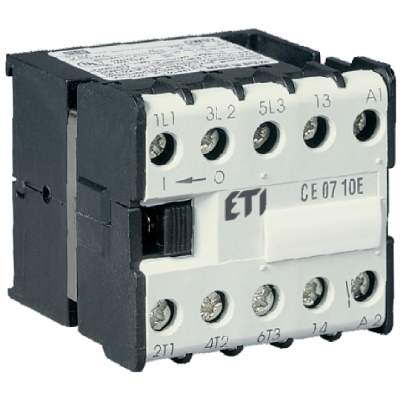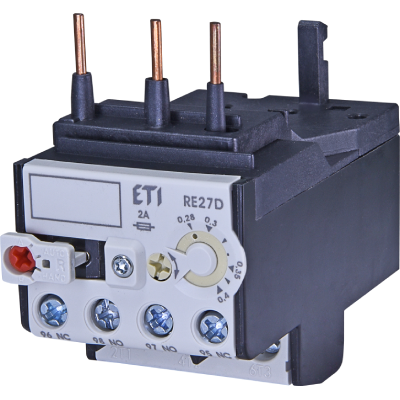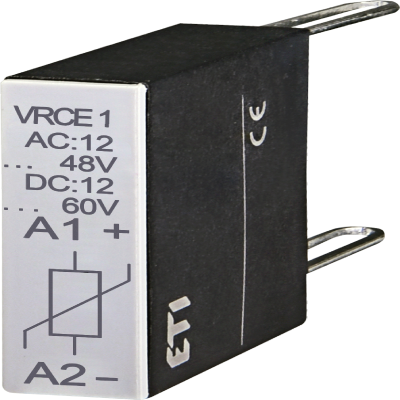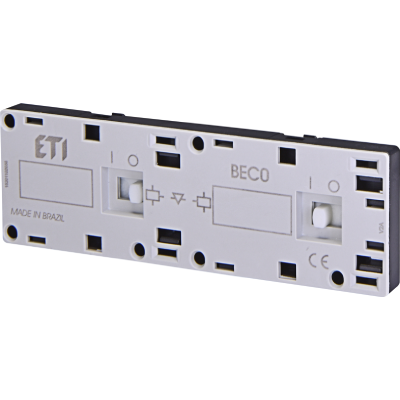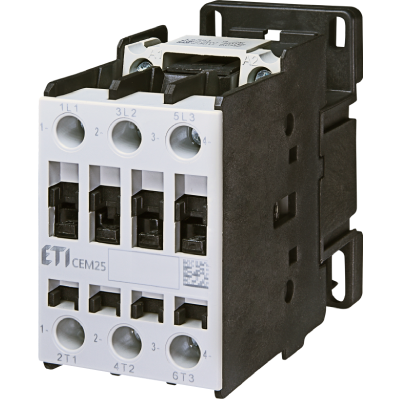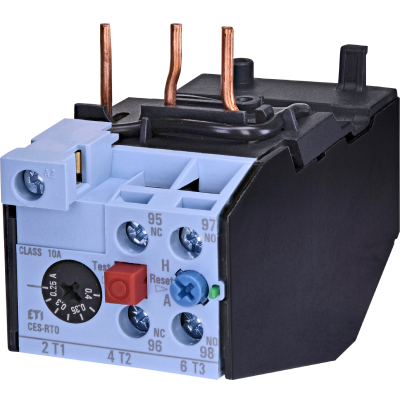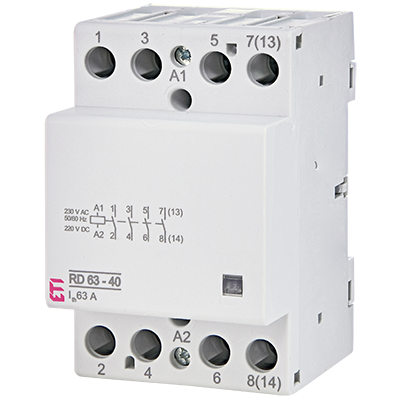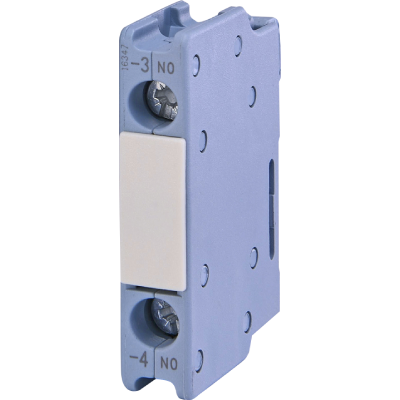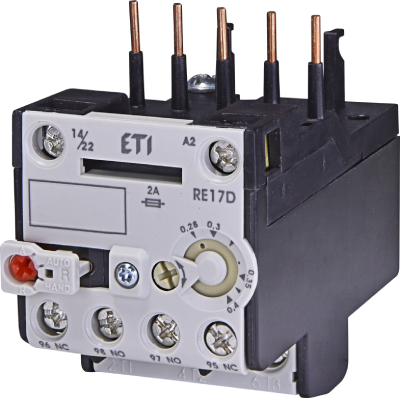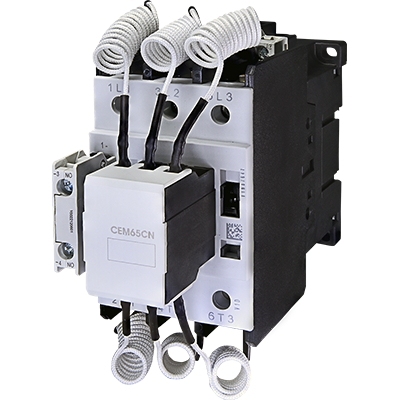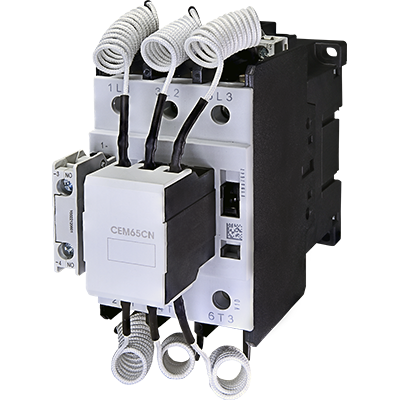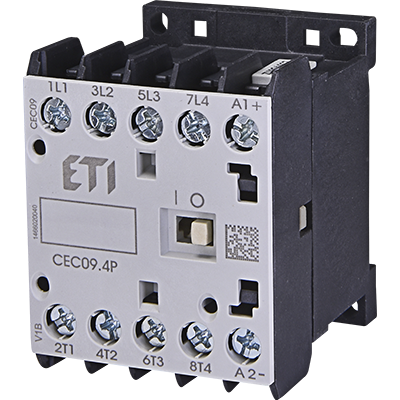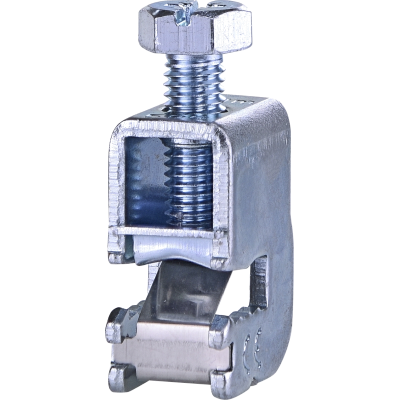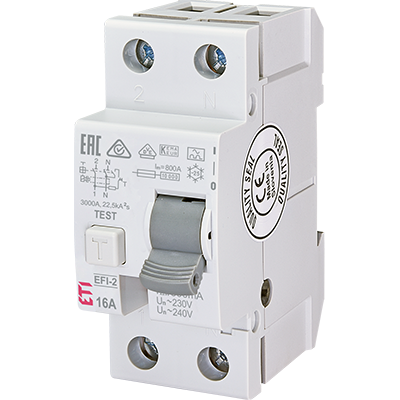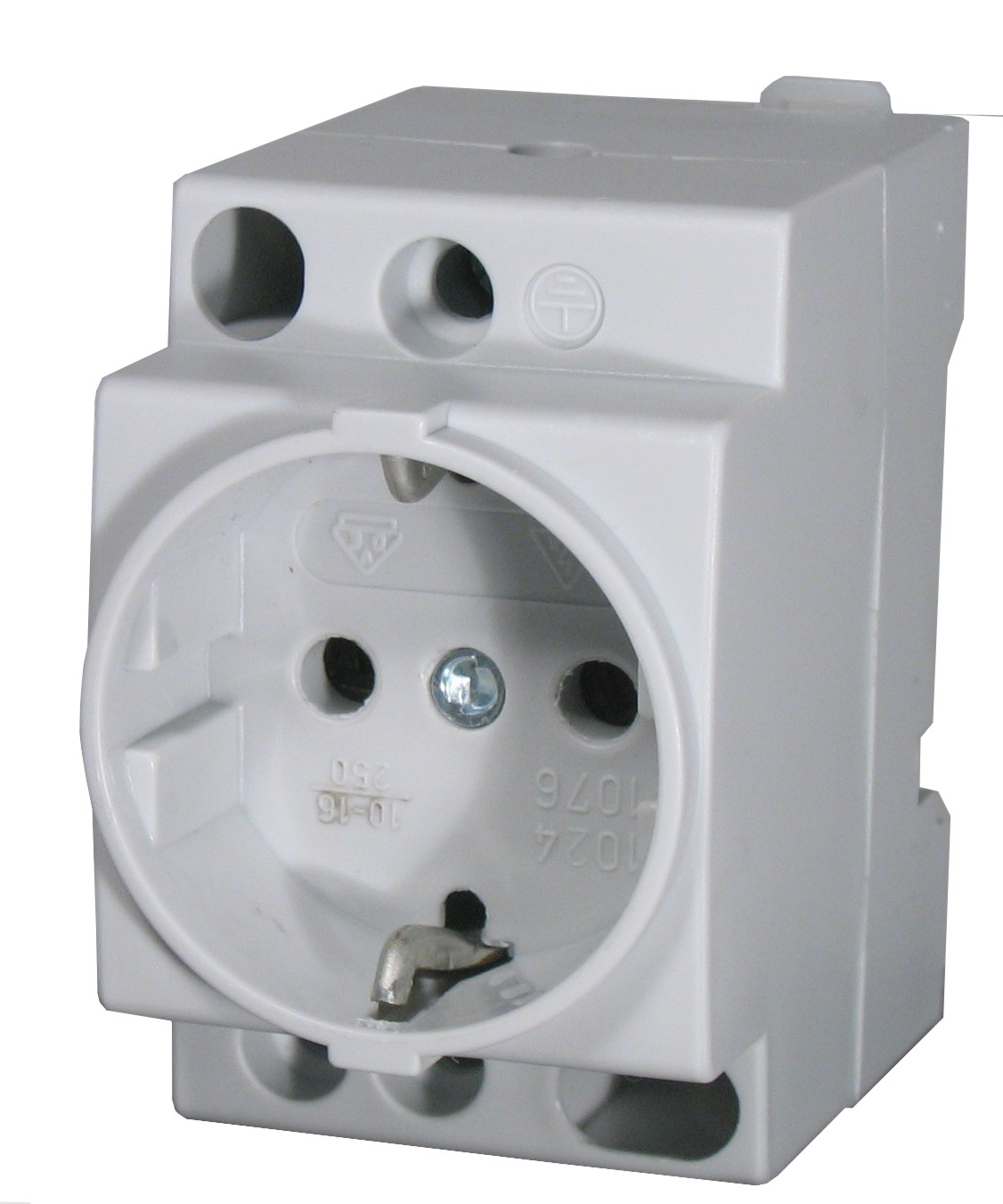KZS-1M-UNI: Compact Protection for Modern Electrical Installations
KZS-1M-UNI is a versatile solution for modern electrical installations. With the option to connect the electrical supply from either the top or the bottom, it provides greater flexibility and simplifies installation in various setups.
In the 1990s, a new type of protective device began appearing in electrical distribution boards in Slovenia – the so-called combined protective device (KZS), a commercial name introduced to the market by ETI Izlake.
There are two main types of residual current protective devices (RCDs):
RCCB (Residual Current Circuit Breaker), which provides protection against residual current, and
RCBO (Residual Current Circuit Breaker with Overcurrent protection), which in Slovenia is referred to as KZS (as our house name has been widely adopted).
In this article, we will focus on the RCBO version, i.e. the one that also includes overcurrent protection. Over the last 30 years, KZS devices have evolved significantly: from two-pole and four-pole versions with electromechanical tripping mechanisms to today’s compact electronic models.

Components of the KZS
Today, combined protective devices are typically used in circuits where we want to increase safety against electric shock. They are commonly applied as additional protection for socket circuits in children’s rooms, in damp environments such as bathrooms or workshops, and wherever space saving in the distribution board is important.
A KZS integrates the functions of:
an RCD (protection against residual current), and
a miniature circuit breaker (MCB) (protection against overload and short circuit).
This means that one device provides multiple protections in a single compact unit

The KZS-1M-UNI occupies the same space in the distribution board as a standard single-pole MCB. A key advantage is that both phase and neutral conductors can be connected from either the top or bottom, making installation more flexible and convenient for electricians.
In the following sections, we will examine what the device markings mean (e.g. C16, 10 mA)
The MCB Function of the KZS-1M-UNI
KZS-1M-UNI features an electronic tripping unit that performs the same role as a standard electromechanical MCB: protecting low-voltage conductors and cables against overload and short-circuit currents. We also offer a mechanical version of the KZS 1MS, but more about that in another post...
The tripping unit consists of:
Electronic thermal overload release – operating with an inverse time delay depending on the heating effect of the current. The higher the overload current, the faster it trips.
Electronic short-circuit release – designed to trip instantaneously (in a few milliseconds) when a fault current several times higher than the rated current occurs.
The KZS-1M-UNI is available in two trip characteristics:
B-curve: trips at 3–5 times the rated current
C-curve: trips at 5–10 times the rated current
For example, a C16 version trips on overload above 16 A (after a defined time delay), and instantaneously if the current rises to between 80–160 A or more.

Time-current characteristic (I-t curve) of KZS-1M-UNI
Practical example:
If both an electric stove and a water heater are connected to the same circuit protected by a C16 KZS, the total load might reach 32 A – twice the rated current. This overload would overheat a 2.5 mm² conductor, potentially leading to insulation damage or even fire. The KZS would trip within approximately 10 seconds to 1.5 minutes, depending on conditions.
In the event of a short circuit (phase to neutral contact), the fault current can reach hundreds of amps. In this case, the device disconnects the circuit within milliseconds.
Since the electronic tripping mechanism requires supply voltage to operate, the device is voltage-dependent. Hence, the label U > 90 V is marked on the unit.
KZS-1M-UNI is commercially available for rated currents of 6, 10, 13, 16, 20, and 25 A.
The RCD Function of the KZS-1M-UNI
The RCD function provides protection against electric shock by automatically disconnecting the supply in case of a fault.
When an insulation fault occurs (e.g. live conductor touching the metal casing of a water heater), a residual current flows through the protective conductor (PE), the earthing system, and back to the transformer. This imbalance between incoming and outgoing currents is detected by the RCD mechanism, which then trips the circuit.
The key parameter is the rated residual operating current (IΔn). The KZS-1M-UNI is available with:
10 mA,
30 mA, or
100 mA sensitivity.
The model in Figure 1 has IΔn = 10 mA, providing very high protection sensitivity.
Two RCD types are available:
Type AC – sensitive to sinusoidal alternating residual currents (see Picture 4). It trips at 50–100 % of the rated residual current.
Type A – sensitive to both sinusoidal AC and pulsating DC residual currents (see Picture 5). Since most modern appliances with electronic circuits generate pulsating DC leakage, Type A is becoming the new standard.
For example, in bathrooms (where hairdryers or other devices may use rectifiers), Type A with a rated residual current of 30 mA is recommended.
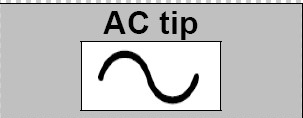
AC type

A type
Applications of KZS-1M-UNI
The KZS-1M-UNI is suitable for:
socket circuits in children’s rooms,
bathrooms,
workshops,
damp or high-risk environments, and
fire-hazard locations.
In Slovenia, regulations require a 100 mA RCD in fire-hazard environments, so a KZS-1M-UNI with IΔn = 100 mA can be applied here. However, in practice, 30 mA is often the safer choice, especially where portable equipment may be used outdoors (e.g. in a wooden garden shed).
The device can also be used for switching operations (manual ON/OFF) of a circuit, since it disconnects both phase and neutral conductors. A clear switch position indicates whether the device tripped due to a fault or was switched off manually.
It is also compatible with busbar systems for one-module devices with L and N connections.
Conclusion
The KZS-1M-UNI combines the functions of a miniature circuit breaker (MCB) and a residual current device (RCCB) in a single, compact unit. Thanks to its electronic tripping technology, it provides reliable protection for both people and electrical systems in residential, commercial, and industrial applications.
It remains fully operational even at temperatures as low as –35 °C, ensuring excellent versatility. Its one-module width makes it ideal where distribution board space is limited, such as when adding new circuits.

